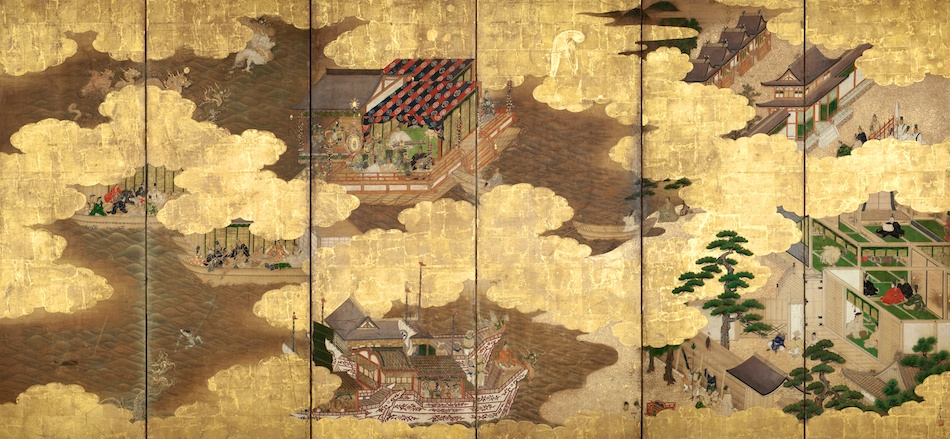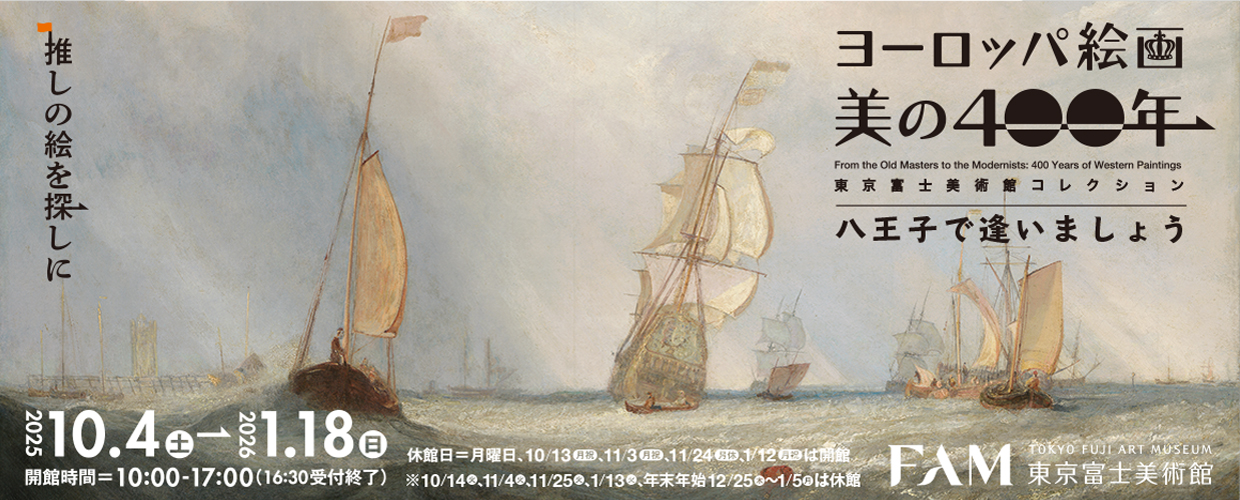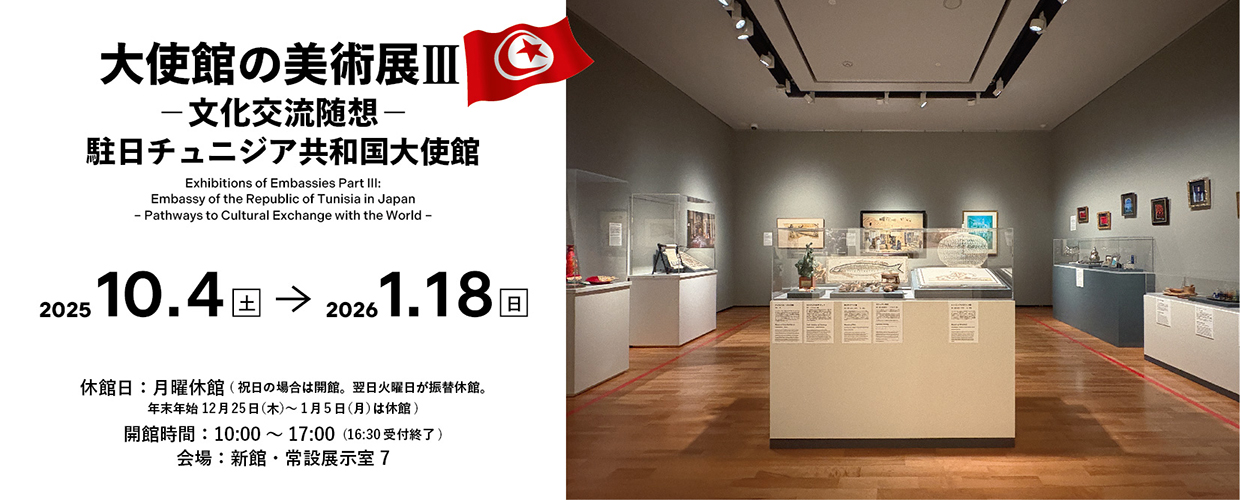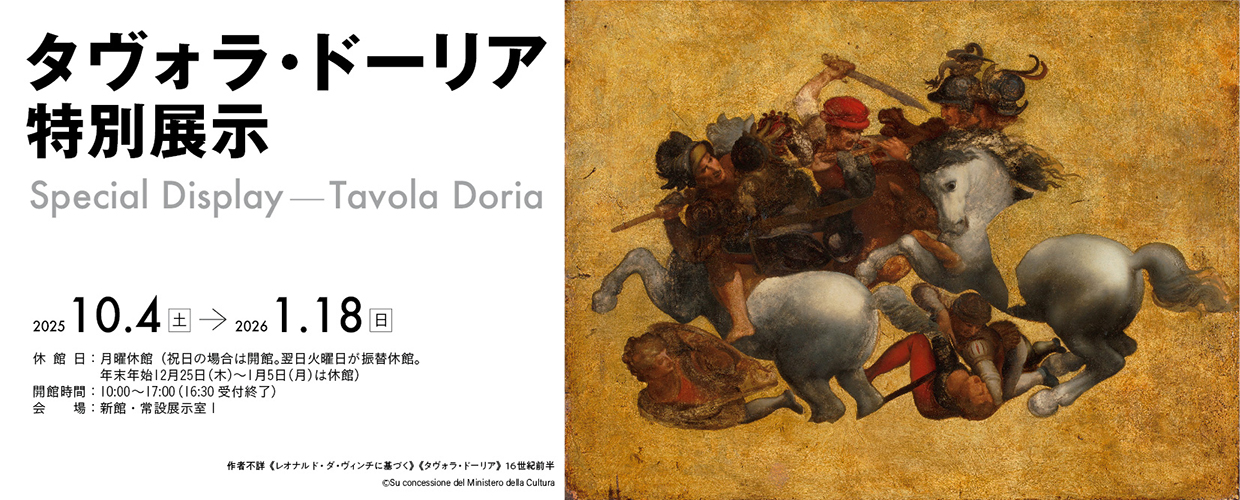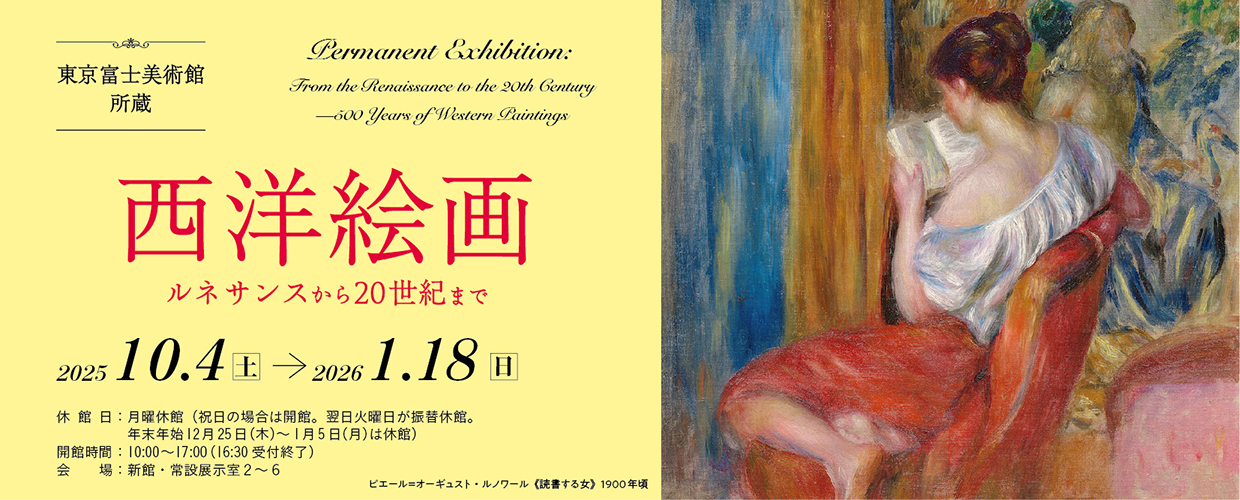Early Edo Period (17th c.)/Color on gold-leaf paper, pair of six-fold screens
166.5 x 357.8 cm (each)
SUMMARY
Taishokukan (“The Great Woven Crown”) is a popular theme for Kowakamai dance performances, describing the conflict between Fujiwara no Kamatari and a Dragon Lord for possession of a precious jewel. When this jewel was carried from China to Japan it was taken by the Dragon Lord but, at Kamatari’s request, a woman diver was able to reclaim it. A taishokukan is a cap signifying the highest of the thirteen ranks of officials, and Kamatari was the only man ever to rise that high. As a result, ‘Taishokukan’ became a synonym for him. The screen is a masterpiece, composing the tale as a painting, and is a rare piece giving an insight into Yamamoto Genkyu, a painter of whom little detail is known.
ARTIST
Yamamoto Genkyu
Date of birth/death unknown
There are almost no surviving works by Yamamoto Genkyu, so much of his life remains clouded in uncertainty. He is thought to have been active from the late 17th to the early 18th century in Kyoto. His given name was Masamitsu, but he was commonly called Genbei. He took the name Genkyu when he shaved his head and entered the Buddhist priesthood in 1669. He is thought to have had the rank of Hokkyo (the third highest rank for Buddhist priests) conferred on him at around this time. He appears to have been a student of Kano Eishin Yasunobu. His representative work is Folding Screen with Design of the Scenes from The Tale of Taishokukan (“The Great Woven Crown”) (the collection of the museum). He was exceptional for his impressive composition and detailed depiction, and also painted fine portraits of famous poets in the style of the Sumiyoshi school.
List of artworks by the same artist
INFORMATION
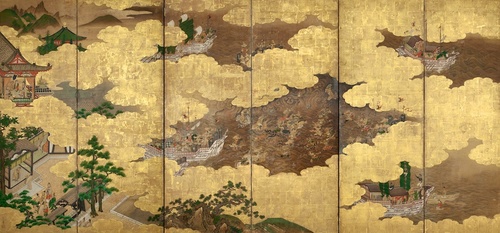
Saturday, March 2 - Sunday, May 12, 2019
The Paintings of Kowaka Dance: Presenting the Heros of the Samurai Umi-Mori Art Museum (Hiroshima, Japan)
EXPLORE

You can search and browse content on a platform across museums and archival institutions nationwide, and create My Gallery (online exhibition).

You can view the work in High-resolution.

